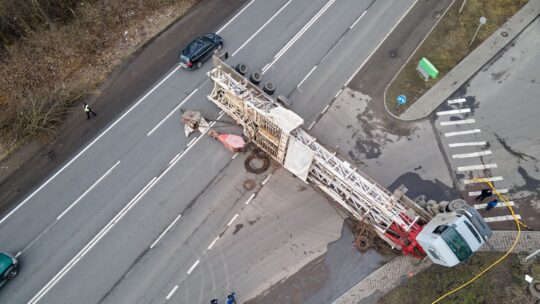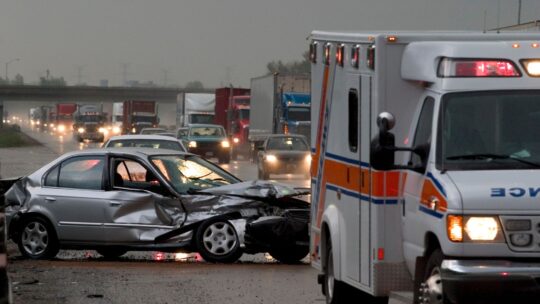
Rural highways consistently show higher fatal crash rates than urban roads, with head-on collisions representing a disproportionate share of these deadly accidents. While city driving feels more dangerous because of heavy traffic and aggressive drivers, the statistics tell a different story about where the most serious crashes actually occur.
The combination of higher speeds, less protective road design, and longer emergency response times creates a perfect storm for catastrophic accidents on rural highways. Drivers often underestimate these risks because rural roads feel safer and less stressful than busy city streets.
Understanding why rural highways are so dangerous for head-on crashes can help drivers adjust their behavior and expectations when traveling on these deceptively risky roads. The factors that contribute to these accidents are often preventable with proper awareness and defensive driving techniques.
Road Design Challenges
Most rural highways feature two-lane undivided roads where opposing traffic travels just feet apart with only painted lines separating vehicles moving at highway speeds. This design creates constant opportunities for head-on collisions whenever drivers drift across the centerline for any reason.
The lack of physical medians or barriers on rural roads means that small mistakes can instantly become fatal accidents. Unlike urban highways with concrete dividers or wide medians, rural roads offer no forgiveness for momentary lapses in attention or vehicle control.
Narrow shoulders and limited sight distance around curves compound the dangers by giving drivers fewer options when they encounter hazards or need to avoid other vehicles. The rolling terrain common on rural highways creates blind spots that hide oncoming traffic until it’s too late to react safely.
Driver Behavior Factors
Fatigue becomes a major factor on rural highways where long stretches of monotonous driving can lull drivers into inattention or microsleep episodes. The lack of visual stimulation and traffic activity makes it easier for tired drivers to lose focus and drift across centerlines.
Rural roads see higher rates of drunk driving, especially on weekend nights when people drive longer distances between bars, parties, and homes. The combination of alcohol impairment and challenging road geometry creates extremely dangerous conditions for head-on crashes.
Speeding is more common on rural highways where drivers feel they can travel faster due to lower traffic volumes and less visible law enforcement. However, the road design and limited sight distances make excessive speed particularly dangerous for avoiding head-on collisions.
Emergency Response Delays
Longer response times for emergency services in rural areas mean that crash victims wait longer for medical attention, increasing fatality rates even for accidents that might be survivable with quicker treatment. The “golden hour” for trauma care becomes critical when help is far away.
Limited trauma center access forces rural accident victims to travel much longer distances for specialized care, often by helicopter or extended ambulance transport. These delays can turn serious injuries into fatalities that wouldn’t occur in urban areas with nearby hospitals.
Communication challenges in rural areas sometimes delay emergency response when cell service is poor or when crashes occur in locations that are difficult to describe or find. GPS coordinates and landmark descriptions become crucial for getting help quickly.
Solutions in Rural Settings
Rumble strips and improved centerline markings help alert drivers when they’re drifting toward oncoming traffic, providing tactile and visual warnings that can prevent head-on collisions. These relatively inexpensive improvements have proven effective at reducing crossover accidents.

Better signage warning of upcoming curves, hills, and passing zones gives drivers more information to make safe decisions about when to attempt passing maneuvers. Clear sight distance markings help prevent drivers from starting passes they can’t complete safely.
Improved lighting at intersections and dangerous curves, along with reflective delineators, helps drivers navigate challenging road geometry at night when many rural head-on crashes occur. Solar-powered LED lights can provide illumination even in remote areas without electrical infrastructure.
Conclusion
Rural highways carry hidden risks that many drivers don’t fully appreciate, with head-on collision rates that far exceed those on busy urban roads. The combination of challenging road design, risky driver behaviors, and delayed emergency response creates conditions where small mistakes become fatal accidents.
Awareness of these risks can help drivers adjust their behavior when traveling on rural highways, including maintaining safer following distances, avoiding aggressive passing, and staying especially alert during long trips. Simple defensive driving techniques become even more important on roads with less margin for error.
Infrastructure improvements targeted at rural highway safety can significantly reduce head-on collision rates, but individual driver awareness and caution remain the most important factors in preventing these tragic accidents. Understanding the unique dangers of rural roads is the first step toward safer travel.


















